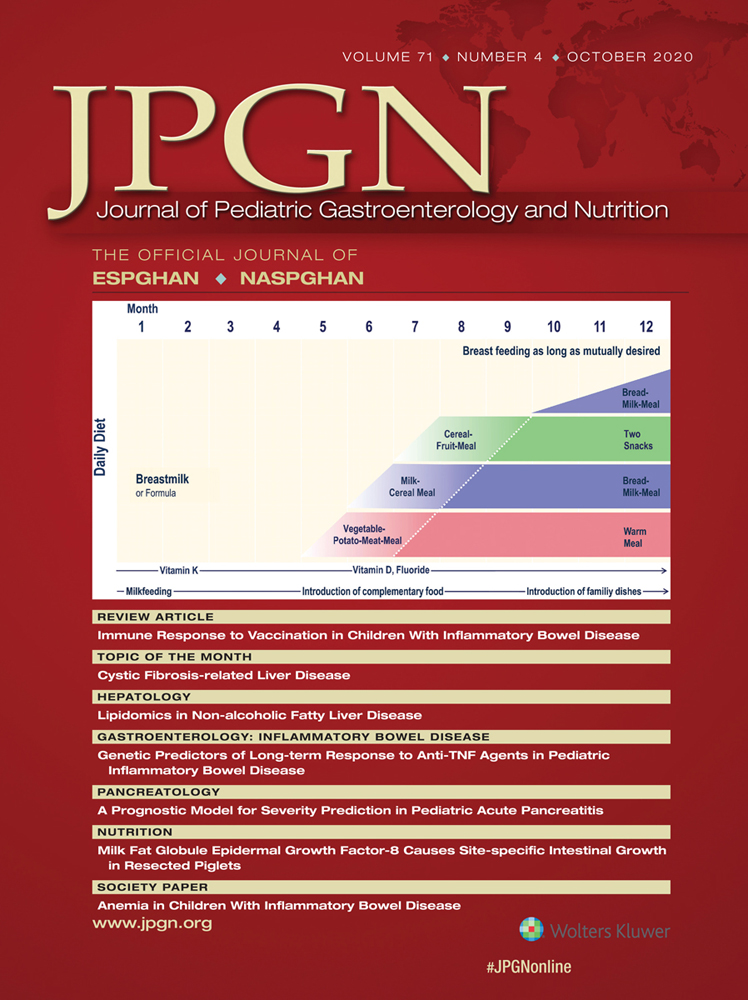Translation of EU Food Law and Nutrient Reference Values Into Practice
the German Dietary Scheme for the First Year of Life
The authors report no conflicts of interest.
Supplemental digital content is available for this article. Direct URL citations appear in the printed text, and links to the digital files are provided in the HTML text of this article on the journal's Web site (www.jpgn.org).
ABSTRACT
Objectives:
European dietary regulations affect national dietary guidelines for child nutrition. The update of the German Dietary Scheme for the first year of life is used to examine the translation of European nutrient references into food-based guidelines while maintaining traditional habits.
Methods:
Within the Dietary Scheme, intake of energy and nutrients was calculated in the complementary feeding period for each of the 3 daily recommended complementary meals (a vegetable-potato-meat meal, a milk-cereal meal, a cereal-fruit meal) in addition to the daily liquid-milk servings (breast milk or follow-on formula). Pureed-home-made complementary meals were assumed. The adequacy of nutrient intake was evaluated by comparison with the European Food Safety Authority (EFSA) Dietary Reference Values. Macronutrient content of meals was compared to the European complementary food directive.
Results:
Daily intake of most nutrients following the scheme was well in line with EFSA values, whereas the commonly ‘critical’ nutrients iron and iodine remained far below EFSA values. Substituting breast milk or whole cow's milk with follow-on formula had only a small impact on nutrient supply. Although the different nutrient profiles of meals were not fully in line with European regulations, they add up to an overall balanced daily diet.
Conclusions:
Taken together, European dietary reference values for energy and nutrients can mostly be met by the modular system of the Dietary Scheme as a total diet concept for infant nutrition in Germany. The different proposed meals generally agree with EU regulations for complementary food.




